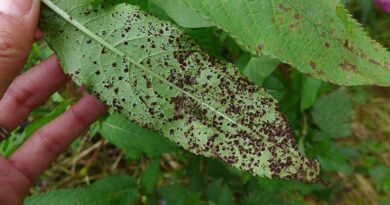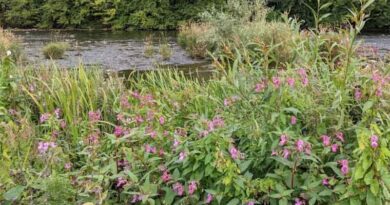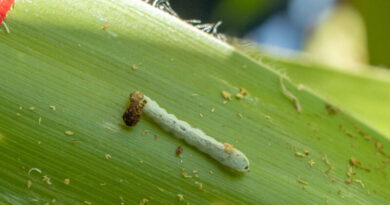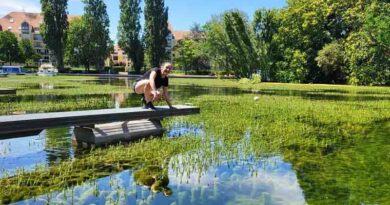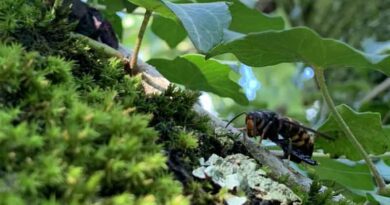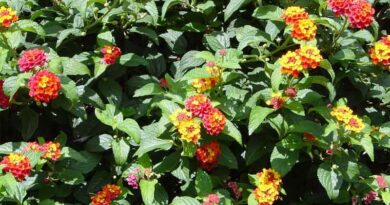Biological Fight Against Himalayan Balsam Stepped Up at Sites Near River Stort in Hertfordshire, UK
02 July 2024, UK: The biological fight against the Himalayan balsam – one of the UK’s most invasive species – is being stepped up at two sites near the River Stort in Hertfordshire, UK, thanks to CABI’s research into the rust fungus Puccinia komarovii var. glanduliferae.
CABI scientists have confirmed that Himalayan balsam populations from two sites near the River Stort, which also flows through the English county of Essex, are fully susceptible to the highly specific rust fungus.
The news means that the Herts and Middlesex Wildlife Trust, which is trialling the innovative treatment to suppress Himalayan balsam – also known as ‘Indian balsam or policeman’s helmet’ – that erodes riverbanks and threatens biodiversity, will release the rust fungus at two sites near the River Stort.
Himalayan balsam (Impatiens glandulifera) was first introduced into the UK in 1839 as an ornamental plant during the time as other invasive plants including giant hogweed (Heracleum mantegazzianum) and Japanese knotweed (Fallopia japonica).
Himalayan balsam is a major nuisance
Now considered an invasive non-native plant, Himalayan balsam is a major nuisance as it colonises river banks, waste ground and damp woodlands. It successfully competes with native plant species for space, light, nutrients and pollinators, and excludes other plant growth, thereby reducing native biodiversity.
But, thanks to funding from the Environment Agency, Affinity Water and Lee Valley Regional Park Authority, CABI is working with Herts and Middlesex Wildlife Trust to fight back against Himalayan balsam with the biological rust fungus control method.
Puccinia komarovii var. glanduliferae is a naturally occurring fungus in the plant’s Himalayan native range, which grows on the leaves of mature plants and stunts its growth, thereby reducing its height and dominance.
Kate Pollard, CABI’s Project Scientist who has been busy investigating the efficacy of the rust fungus, said, “The rust fungus could really be a ‘bio-superhero’ and negate the need for other, labour intensive and environmentally damaging methods of control.”
First fungal biological control agent to be released against a weed
The rust fungus was first approved for release by Department for Environment, Food & Rural Affairs (Defra) Ministers in 2014 – making it the first fungal biological control agent to be released against a weed in the European Union.
Since then, the rust has been released at sites around the UK, with signs of establishment now apparent; the fungus has adapted to the UK climate and is able to successfully reproduce and sustain itself. In June 2022, for example, CABI joined forces with Harrogate Borough Council and the National Trust to release Puccinia komarovii var. glanduliferae at the Hell Wath Local Nature Reserve in Ripon, UK.
The rust, a Puccinia species, is an autoecious (completing its entire life cycle on a single species), macrocyclic (five spore-staged rust fungus), pathogen which infects the stem and leaves of Himalayan balsam throughout the growing season.
Josh Kalms, People and Wildlife Officer at Herts and Middlesex Wildlife Trust, said:
“It’s early days and we are learning from previous trials, but this is very exciting and could be a real breakthrough for the way we manage Himalayan balsam on our riverbanks”.
“To date, the option has been to hand-pull the plant and although its roots are shallow and come away easily, it’s a major task to undertake – and, with it being an annual it’s one that needs repeating year-on-year.
Mr Kalms said “native plants, with their variety of root structures, uphold the structure of riverbanks and, as they disappear, so does the stability around the water’s edge. As well as increasing sedimentation in rivers, this impacts on the burrows of the UK’s most endangered mammal, the Water Vole, as erosion means their homes get washed away”.
Greater biodiversity and the stabilisation of our riverbanks
“I must express my thanks to all the region’s river groups and volunteers who work tirelessly to control Himalayan Balsam by ‘balsam bashing’ – a manual process to remove the plants before they set seed,” Mr Kalms said. “If the trials are successful, we can all look forward to saving time and money but most importantly to seeing wildlife come back, greater biodiversity and the stabilisation of our riverbanks.”
Seeds will also be collected in the Ash valley with a view to a further trial there next year.
Alexandra Sage, Senior Asset Scientist – Project Manager, Catchment and Biodiversity Team, Water Resources and Environment at Affinity Water said:
“We are thrilled to support innovative projects through our INNS Out scheme.
“Himalayan balsam is one of the most prevalent invasive species in our supply area, requiring significant volunteer and contractor efforts for control each year. We’re eager to see the trial results, which could greatly benefit us and our partners in combating Himalayan balsam.”
(For Latest Agriculture News & Updates, follow Krishak Jagat on Google News)
(+80 Million Farming Audience Visits Krishak Jagat’s Hindi Website – Click Here for Website)


